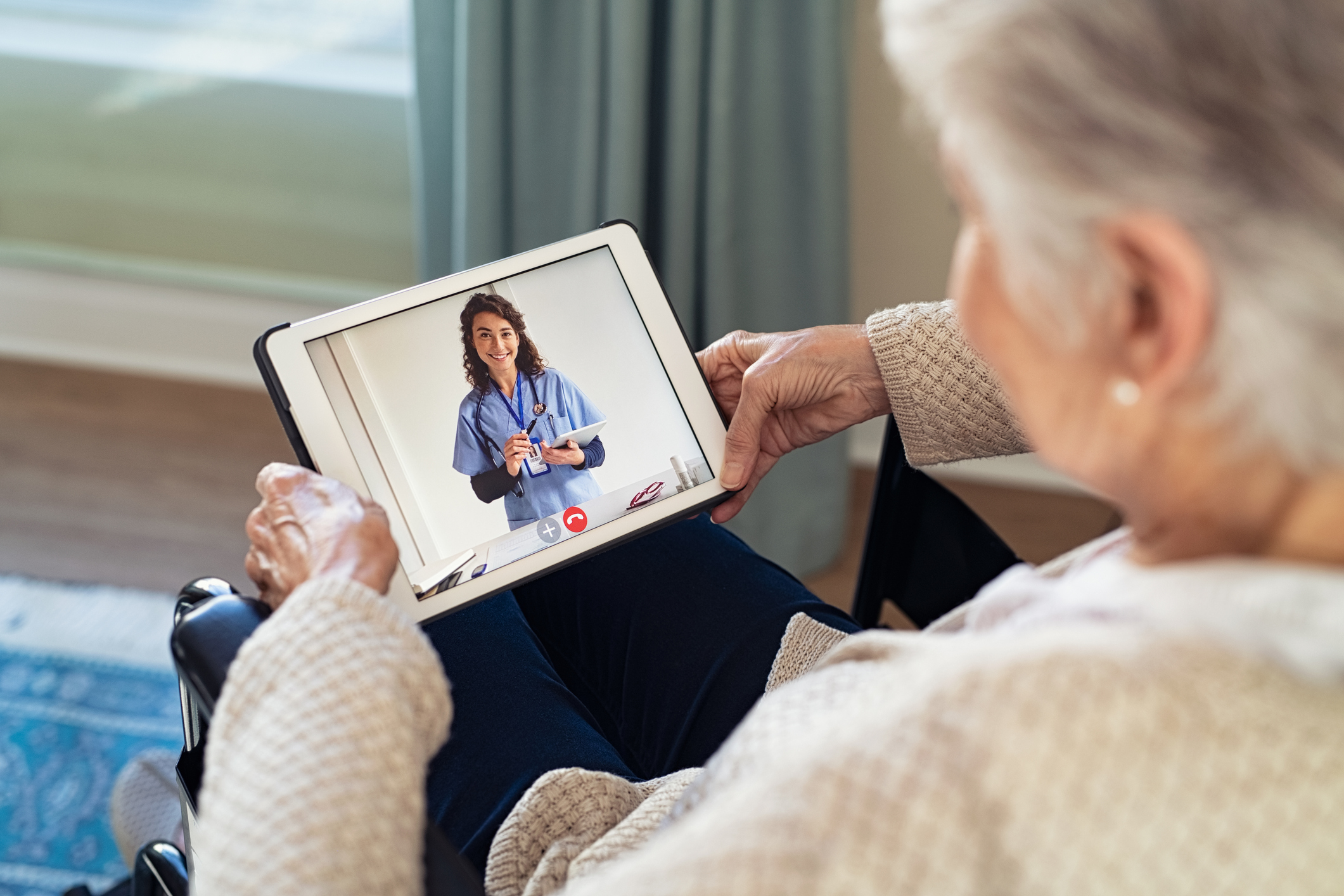Despite the many challenges older adults faced during the pandemic, there were some positive changes that will continue to benefit seniors and improve their quality of life. Because mobility and transportation are often an obstacle for older adults to access healthcare and social services, increased comfort with technology and, in particular using telehealth services, among seniors will help them stay healthy, and more connected in the future.
More seniors learned to video chat, text, email, and order groceries online during the pandemic. According to a recent AARP survey, cell phone use among people over 50 rose 29 percent since 2019, and more older adults used wearable devices to monitor their health and downloaded apps or visited websites to conduct banking transactions.
Video chatting was not only a great way to stay connected with friends and family, but telehealth visits provided seniors with access to their doctor from the comfort of home. Telehealth platforms are continuing to expand and many people of all ages will utilize these services when an in-person visit is not necessary or mobility or transportation limitations make travel difficult.
Not only are patients able to have a telehealth video chat with their doctor or nurse practitioner, but some of the newly-developed online health hubs include fitness programs, dental consultations, and pre-packaged prescription shipping. The Amazon Care program has recently expanded in certain cities to provide a visiting nurse practitioner to patients at home for routine vaccinations and blood draws.
Independa, a seniors’ health care TV-based platform, encourages remote engagement and telehealth visits using an LG Smart TV. The built-in health platform allows seniors or their caregivers to easily access telehealth services without the hassle of computers and website logins. Doctors will also benefit from the use of a larger screen to get a better view of the whole body to assist with diagnosis. Loved ones can video chat with the intuitive platform that utilized the familiar television screen format – a large screen is also easier for people with vision problems to use. The platform is not a monitoring system and the camera is only turned on if a notification is accepted by the user.
Canadians are finding a similar increase in acceptance of telehealth services among both patients and care teams. 46% of Canadians indicated their preference for a telehealth visit as the first point of contact with their physician. There are, however, socioeconomic barriers to access that need attention.
Although telemedicine offers many advantages, especially for older adults, remote healthcare cannot replace certain in-person screenings such as imaging tests, or blood work. But with the use of wearable devices, virtual visits and an online portal, care for older adults can be better coordinated, with streamlined sharing of information, care reminders, and monitoring.






Add Your Voice
0 Comments
Join the Discussion